Fort Walton Beach, FL
428 Mary Esther Cut Off NW Unit A,
Fort Walton Beach, FL
32548, United States
(850) 374-3595
Discover how often you should treat yourself to a facial. The Beauty Experts have the answer to unlock radiant, glowing skin. Learn more here.
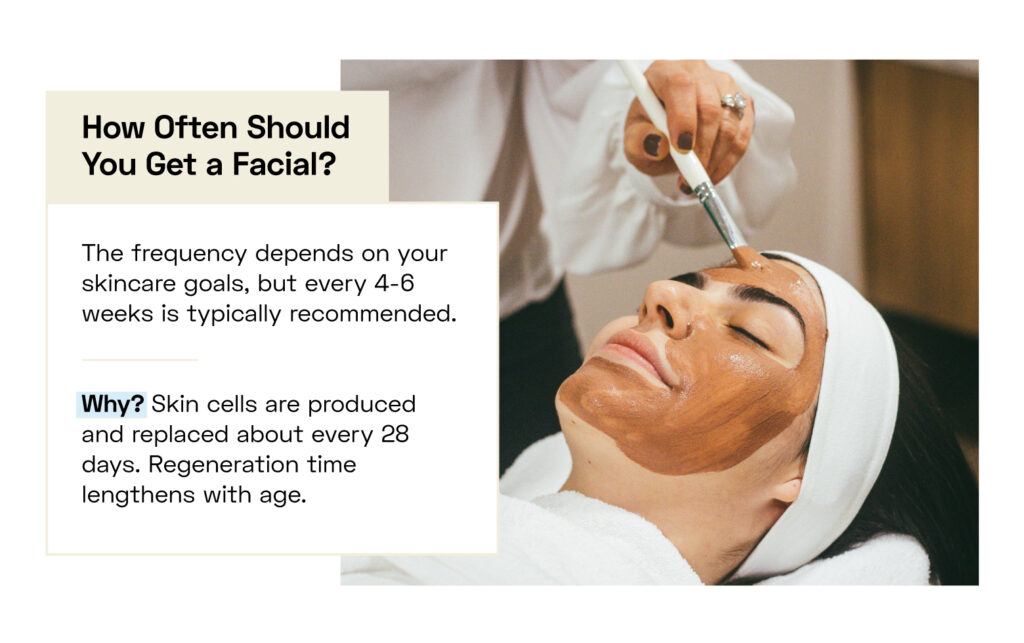
If you’ve ever wondered how often you should be treating yourself to a facial, you’re not alone. With countless skincare options and conflicting advice out there, it can be hard to navigate the world of facials. But fear not, because The Beauty Experts are here to help. Located in Mary Esther, FL, The Beauty Experts, owned and operated by Tilly Souriyseng, are your go-to destination for all things beauty. From skincare to lash extensions, they’ve got you covered. Tilly, a certified Bella Lash Trainer, not only trains students on how to become lash techs at the Beauty Experts Academy of NW Florida, but also offers mentoring programs for those looking to build their own successful lash businesses. With Tilly’s expertise and guidance, she’s seen incredible success, going from making $10k a month to an impressive $80k a month. So, how often should you get a facial? Let The Beauty Experts provide you with the answer and unlock the key to radiant, glowing skin.
Facials are an essential part of a skincare routine, providing numerous benefits and helping to improve the overall health and appearance of your skin. Whether you have specific skin concerns or simply want to maintain a healthy complexion, incorporating regular facials into your skincare regimen is a wise decision. In this article, we will explore the importance of facials, the benefits they offer, and how they can effectively improve the condition of your skin. So, let’s dive right in!
Facials offer a wide range of benefits that contribute to the overall health and rejuvenation of your skin. Let’s take a closer look at some of these benefits:
Deep Cleansing: A facial involves a thorough cleansing of your skin, removing dirt, oil, and impurities that can clog your pores and lead to breakouts. This deep cleansing helps to prevent acne and promotes clear, radiant skin.
Exfoliation: During a facial, the esthetician will exfoliate your skin to remove dead skin cells and promote cell turnover. This process helps to reveal a fresh layer of skin, resulting in a smoother and more youthful complexion.
Improved Circulation: The massage techniques used during a facial stimulate blood flow to the skin, which promotes a healthy complexion and a natural glow. Enhanced circulation also aids in the delivery of nutrients to your skin cells.
Hydration and Moisture: Many facials include the use of hydrating masks and serums, which help to replenish moisture and restore hydration to your skin. This is especially beneficial for individuals with dry or dehydrated skin.
Stress Relief: Facials provide a relaxing and pampering experience, allowing you to unwind and relieve stress. The soothing environment and gentle touch of the esthetician’s hands can help reduce tension and promote a sense of well-being.
Customized Treatments: Facials can be tailored to address specific skin concerns such as acne, aging, hyperpigmentation, or sensitive skin. The esthetician will assess your skin type and condition to recommend the most suitable treatments and products.
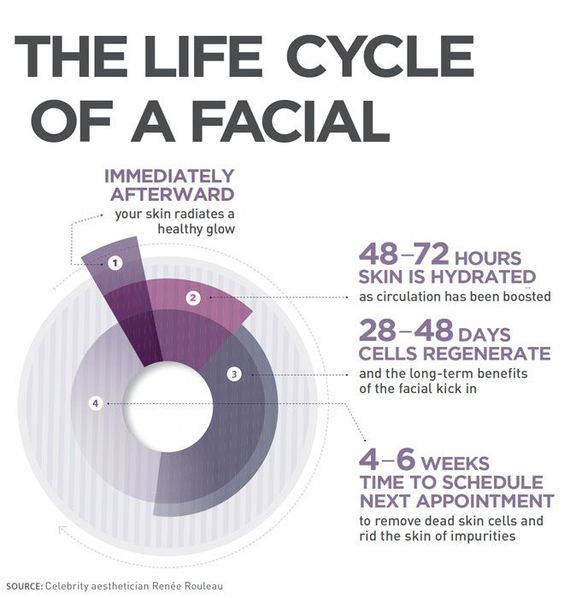
This image is property of images.squarespace-cdn.com.
Facials work wonders in improving the overall condition of your skin. Here are some ways in which facials can effectively enhance your complexion:
Cleansing and Detoxifying: Regular facials help to remove impurities, excess oil, and dead skin cells, effectively detoxifying your skin and preventing clogged pores. This leads to a clearer and healthier complexion.
Anti-Aging Benefits: facial treatments such as anti-aging facials can help reduce the appearance of fine lines, wrinkles, and age spots. These treatments often incorporate ingredients and techniques that promote collagen production and improve skin elasticity.
Brightening and Radiance: Facials that include exfoliation and brightening agents can help to reduce dullness and enhance the natural radiance of your skin. By removing dead skin cells and stimulating cell turnover, these facials reveal a refreshed and glowing complexion.
Acne Prevention and Treatment: Facials designed for acne-prone skin can target and control breakouts by removing pore-clogging impurities, reducing inflammation, and balancing oil production. Regular acne facials can significantly improve the condition of acne-prone skin.
Hydration and Nourishment: Hydrating facials and treatments that incorporate nourishing ingredients can replenish moisture and essential nutrients in your skin. This helps to restore hydration, promote a healthy moisture barrier, and improve the overall texture and tone of your skin.
Before getting a facial, there are several factors you should consider to ensure you choose the right type of facial and frequency that suits your specific needs. These factors include your skin type, skin concerns, budget, and time availability.
Understanding your skin type is crucial in determining the most suitable facial treatments for you. Whether you have normal, oily, dry, combination, or sensitive skin, there are facials designed to address the unique needs of each skin type. Consulting with a skincare professional can help determine your skin type and recommend appropriate facials.
Identifying your specific skin concerns is essential in selecting the most effective facial treatments. Whether you struggle with acne, aging signs, hyperpigmentation, dullness, or clogged pores, there are targeted facials available to address each concern. Discussing your concerns with an esthetician will help you choose the right treatments.
Consider your budget when deciding on the frequency of facials. While professional facials can range in price, it’s important to find a balance between affordability and quality. Investing in your skin’s health is important, but it’s also essential to select facials that fit within your budget.
The time you can commit to getting facials is another factor to consider. Some facial treatments may require more time than others, and you need to ensure you can allocate enough time for the treatment and recovery if necessary. Additionally, take into account the frequency of visits that best aligns with your schedule.
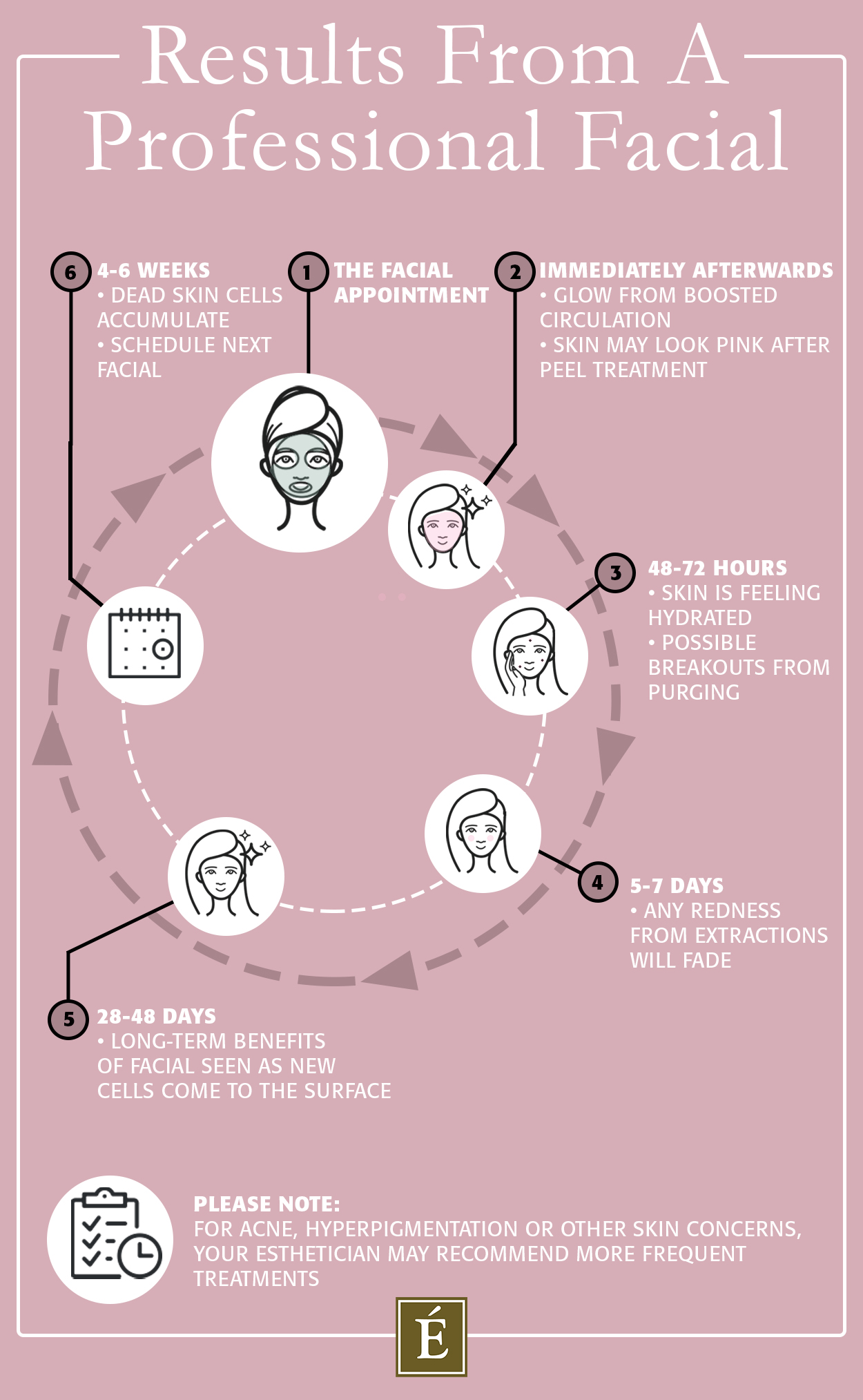
This image is property of eminenceorganics.com.
Now that you’ve considered the factors mentioned above let’s explore the different types of facials available to address your specific needs and concerns. Each facial type offers unique benefits and targets particular skin issues. Let’s take a closer look at some popular facial types:
A basic facial focuses on deep cleaning, exfoliation, and hydration. It typically involves cleansing, exfoliating, steaming, extractions (if needed), mask application, and moisturizing. This facial is suitable for all skin types and provides a solid foundation for healthy skincare.
As the name suggests, an acne facial is specifically designed for acne-prone skin. It aims to reduce inflammation, control oil production, prevent breakouts, and minimize the appearance of acne scars. The treatment may involve deep cleansing, exfoliation, extractions, targeted serums, and calming masks.
An anti-aging facial targets signs of aging such as wrinkles, fine lines, and age spots. These facials often include ingredients and techniques that stimulate collagen production, improve skin elasticity, and promote a youthful appearance. They may include exfoliation, specialized serums, massage, and rejuvenating masks.
Individuals with sensitive skin require gentle and soothing facials tailored to their specific needs. Sensitive skin facials often involve mild exfoliation, calming ingredients, and hydrating treatments to reduce redness, inflammation, and irritation. The esthetician will carefully select products that are free from potential irritants.
Dry and dehydrated skin benefits from hydrating facials that focus on replenishing moisture and restoring the skin’s natural hydration. These facials typically involve deep moisturization, nourishing masks, and the use of hyaluronic acid or other hydrating ingredients to lock in moisture.
It’s essential to consult with a skincare professional to determine the facial type that best suits your skin type and concerns. They will assess your skin and recommend the appropriate treatments.
The frequency of getting facials varies depending on your skin type. Here’s a breakdown of facial frequency based on different skin types:
If you have normal skin, you can benefit from monthly facials to maintain your skin’s health and address any minor issues that may arise.
Oily skin tends to produce excess sebum and is prone to clogged pores. Individuals with oily skin can benefit from facials every 3-4 weeks to control oil production and prevent breakouts.
Dry skin requires extra hydration and nourishment. For individuals with dry skin, monthly facials or bi-monthly facials can help restore moisture and improve skin texture and appearance.
Combination skin, characterized by both oily and dry areas, can benefit from monthly facials or bi-monthly facials to address specific concerns in each area. This helps balance oil production and maintain an overall healthy complexion.
Sensitive skin requires gentle care and may not tolerate frequent facials. For sensitive skin, quarterly facials or occasional treatments as recommended by a skincare professional can be beneficial.
It’s important to note that these frequencies serve as general guidelines, and individual needs may vary. Consulting with a skincare professional will help determine the most suitable frequency based on your skin type and concerns.
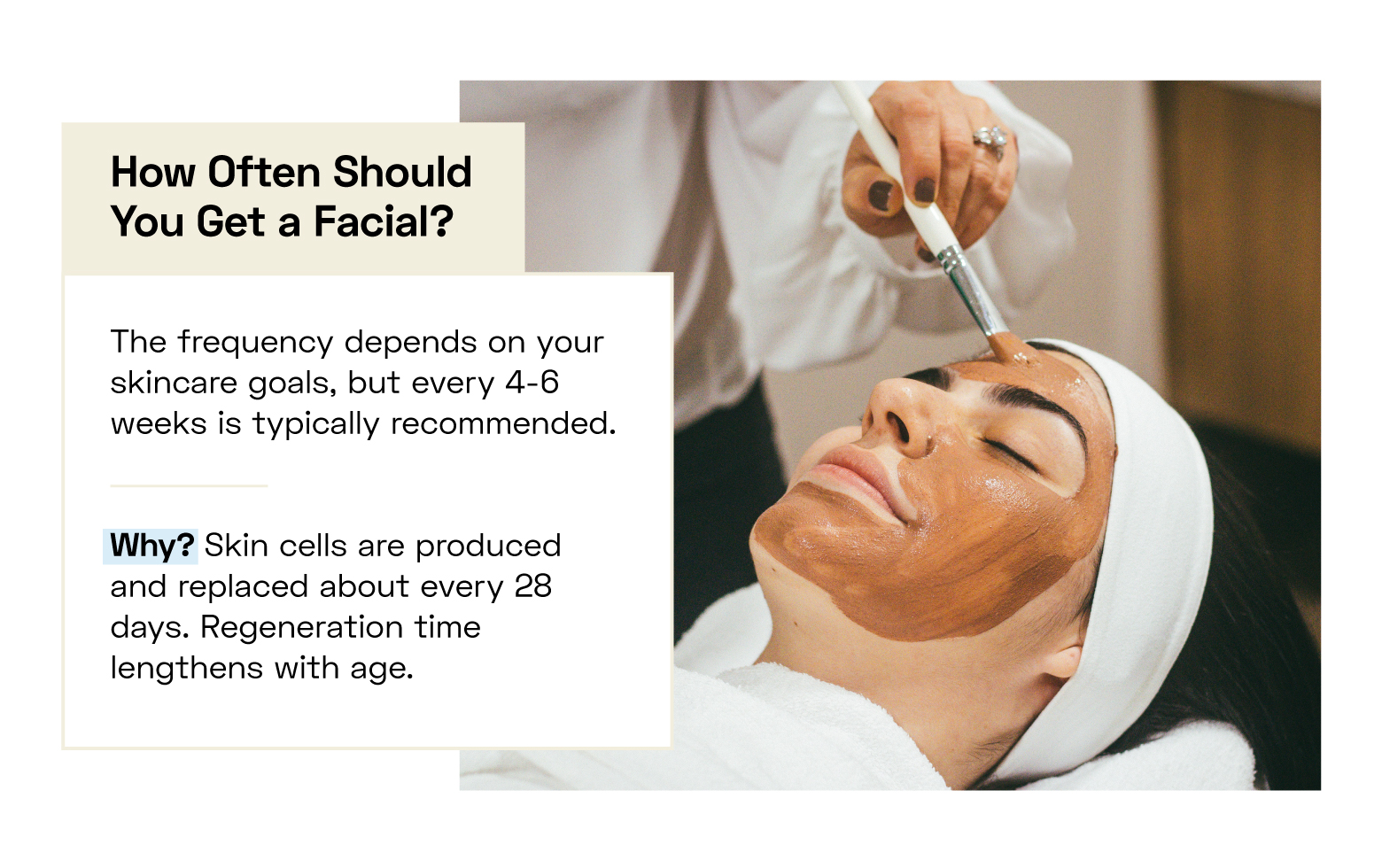
This image is property of wordpress.styleseat.com.
In addition to considering your skin type, it’s essential to factor in your specific skin concerns when determining facial frequency. Let’s explore how often you should get facials based on common skin concerns:
Individuals with acne-prone skin can benefit from bi-monthly or monthly facials. Regular treatments can help control breakouts, reduce inflammation, and minimize the appearance of acne scars. The esthetician may perform extractions, apply targeted serums, and use acne-fighting masks.
For those concerned with signs of aging, monthly or bi-monthly facials can be beneficial. Anti-aging facials that focus on collagen stimulation, cell turnover, and improving skin elasticity can help reduce the appearance of wrinkles and fine lines.
Facials targeting hyperpigmentation, such as dark spots or uneven skin tone, can be performed every 2-3 weeks. These facials typically involve exfoliation, the use of brightening agents, and the application of products that inhibit melanin production.
If you frequently experience dullness or lackluster skin, weekly or bi-weekly facials can help revive your complexion. These facials often involve exfoliation, hydration, and the use of products that promote radiance and rejuvenation.
Individuals with clogged pores may benefit from monthly or bi-monthly facials to address this concern. The esthetician will perform thorough extractions and use products to prevent future clogging, resulting in clearer and smoother skin.
While there are general guidelines for facial frequency based on skin type and concerns, professional recommendations can provide tailored advice based on individual needs. Here are some common professional recommendations:
Monthly facials are recommended for individuals looking to maintain healthy and balanced skin. These facials can address minor concerns and provide a preventive approach to skincare.
Bi-monthly facials are suitable for individuals with specific concerns that require more attention. This frequency allows for more targeted treatments and enhanced results.
For those with sensitive skin or those on a tighter budget, quarterly facials can still provide beneficial results. These facials offer maintenance and can be adjusted based on any changes in the skin.
Seasonal facials can be a great way to address specific skin needs during different times of the year. As the seasons change, so do our skin’s requirements, and seasonal facials can help adapt to those changes.
Remember, these recommendations are a starting point, and it’s crucial to consult with a skincare professional to determine the best frequency for your skin. They will assess your skin, listen to your concerns, and provide personalized recommendations.
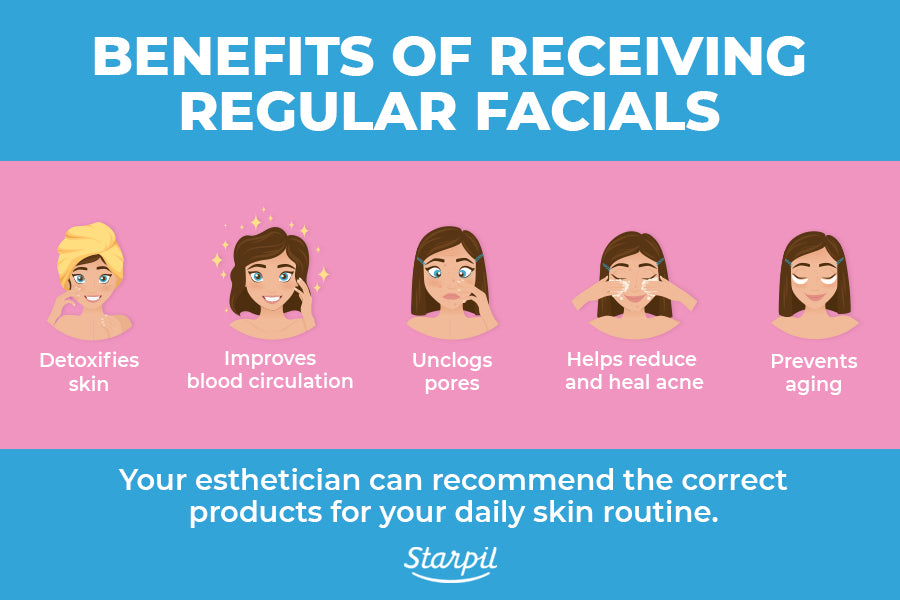
This image is property of cdn.shopify.com.
In addition to professional facials, establishing a consistent at-home facial routine is essential for maintaining healthy skin. Your at-home routine should include a daily skincare regimen and a weekly skincare routine.
A daily skincare routine typically involves the following steps:
Cleansing: Start your day by cleansing your face with a gentle cleanser suitable for your skin type.
Toning: Apply a toner to balance the pH of your skin and remove any residual impurities.
Serums/Treatments: Apply targeted serums or treatments to address specific skin concerns such as acne, aging, or hyperpigmentation.
Moisturizing: Hydrate and nourish your skin by applying a moisturizer suitable for your skin type.
Sun Protection: Finish off your routine by applying a broad-spectrum sunscreen with at least SPF 30 to protect your skin from harmful UV rays.
Nighttime Routine: Before bed, repeat the cleansing, toning, and moisturizing steps. Additionally, consider incorporating a night cream or overnight mask for added hydration and repair.
On a weekly basis, incorporate the following steps into your skincare routine:
Exfoliation: Exfoliate your skin once or twice a week to remove dead skin cells and reveal a fresh layer of skin. Choose an exfoliant suitable for your skin type and follow the instructions carefully.
Face Masks: Treat your skin to a face mask once or twice a week, targeting specific concerns such as hydration, brightening, or deep cleansing. Choose masks with ingredients that suit your skin’s needs.
Eye Care: Don’t forget to include eye care in your weekly routine. Apply an eye cream or serum to address concerns like dark circles, puffiness, or fine lines.
Maintaining a consistent at-home facial routine will complement the benefits of professional facials, ensuring optimal results for your skin.
While at-home skincare routines are beneficial, it’s crucial to consult with a skincare professional for personalized advice and guidance. Here’s why consulting a professional is essential:
A skincare professional can assess your skin’s specific needs, identifying any underlying concerns that may require professional treatments. They can recommend the most suitable facials, products, and techniques to address your unique skin requirements.
With the abundance of skincare information available online, it’s tempting to take a DIY approach. However, attempting complex treatments or using incorrect products without professional guidance can lead to skin damage or ineffective results. A skincare professional can help you avoid these mistakes and provide tailored recommendations for optimal outcomes.
By consulting a skincare professional, you’ll gain valuable insights into your skin’s condition and develop a personalized skincare plan that suits your needs and goals.
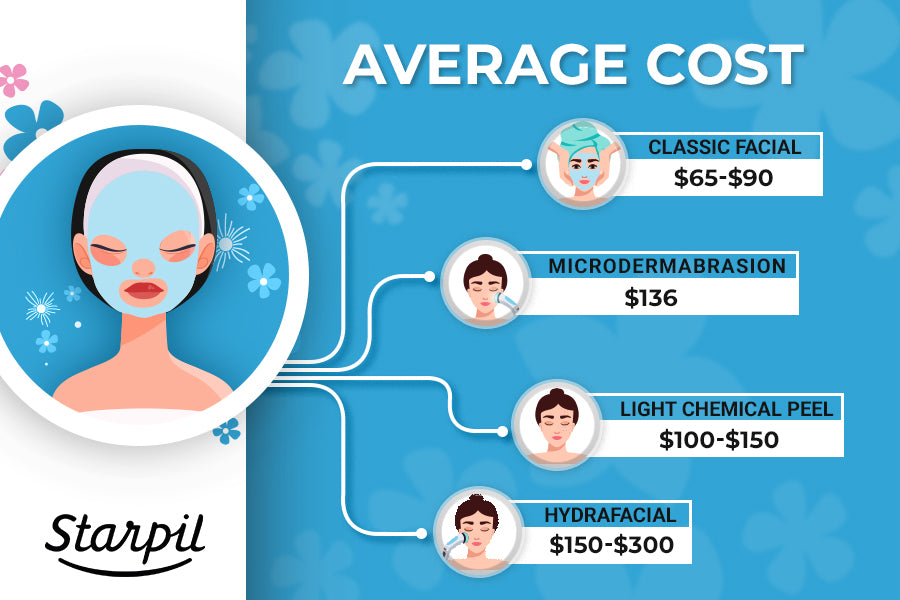
This image is property of cdn.shopify.com.
While facials offer numerous benefits, it’s important to avoid overdoing them. Here are some signs that you may be overdoing facials:
If you experience redness, itchiness, or a burning sensation after a facial, it could be a sign of overstimulation. Over-exfoliation or harsh treatments can strip away your skin’s natural barrier and result in irritation. It’s important to communicate openly with your esthetician and adjust your treatment plan accordingly.
Facials should not leave your skin more sensitive than before. If you notice your skin becoming excessively sensitive or reactive, it may be an indication that you’re receiving facials too frequently. Give your skin time to recover and consult with a skincare professional to adjust the frequency or type of facials.
Facials aim to improve your skin’s condition, but if you start experiencing frequent breakouts or acne after facials, it may be a sign of over-stimulation or a reaction to certain products. Discuss your concerns with your esthetician, who can make necessary adjustments to your treatment plan.
While facials are meant to hydrate your skin, excessive facials can disrupt your skin’s natural moisture balance and lead to dryness. If you notice your skin becoming increasingly dry or flaky after receiving facials, it’s important to reevaluate the frequency and types of treatments you’re receiving.
Facials are not only a luxurious treat but also an essential step in maintaining and improving the health and appearance of your skin. By understanding the importance of facials, the benefits they offer, and considering factors such as your skin type, concerns, budget, and time availability, you can make informed decisions about the frequency and types of facials that best suit your needs. Remember to consult with a skincare professional for personalized recommendations and to establish a consistent at-home facial routine. By listening to your skin and providing it with the care it requires, you can achieve a healthy, radiant complexion that you’ll love.